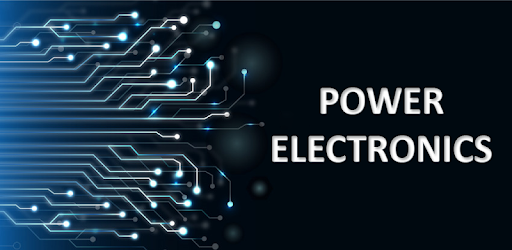Introduction
In the digital age, where technology shapes our daily lives, the demand for efficient and reliable electronic devices is ever-increasing. Power electronics, a critical subfield of electrical engineering, has emerged as a game-changer in energy management and conversion. This article explores the fascinating world of power electronics, its significance in modern technology, and its impact on various industries. Let’s delve into the complexities and innovations that make power electronics the cornerstone of a sustainable future.
Understanding Power Electronics
Power electronics refers to the study and application of electronic circuits for controlling and converting electrical power. It deals with the conversion and regulation of electric power from one form to another, making it adaptable for various electronic systems. Its primary components include switches, diodes, transistors, and other semiconductor devices that facilitate the smooth flow of electrical energy.
Applications of Power Electronics
a) Renewable Energy
In the quest for sustainable energy solutions, power electronics plays a pivotal role in integrating renewable energy sources like solar, wind, and hydro power into the power grid. These sources generate DC (direct current) electricity, which needs to be converted to AC (alternating current) for distribution. Power electronic converters efficiently perform this task, ensuring a steady and seamless supply of clean energy to homes and industries.
b) Electric Vehicles
The rise of electric vehicles (EVs) has revolutionized the automotive industry, and power electronics is the backbone of these eco-friendly machines. Power electronic systems control the battery charging process, manage the power flow between the motor and battery, and improve overall vehicle efficiency. Thanks to power electronics, EVs have become a viable and sustainable alternative to traditional internal combustion engine vehicles.
c) Industrial Applications
In industrial settings, power electronics enables precise control and regulation of electric motors, facilitating variable speed drives for pumps, fans, and compressors. This not only optimizes energy consumption but also extends the lifespan of the equipment. Power electronics is also extensively used in welding, heating, and power transmission applications, making industries more energy-efficient and productive.
d) Consumer Electronics
Power electronics is present in almost every household in the form of chargers, inverters, and power supplies for electronic devices. These devices are designed to ensure maximum energy conversion efficiency, reducing energy wastage and carbon footprint. The advent of power electronics has led to the development of compact and lightweight consumer electronics that are also environmentally friendly.
Advancements in Power Electronics
a) Wide-Bandgap (WBG) Semiconductors
Traditional silicon-based semiconductors have limitations in terms of energy efficiency and operating temperature. The emergence of Wide-Bandgap Semiconductors, such as Silicon Carbide (SiC) and Gallium Nitride (GaN), has revolutionized power electronics. WBG semiconductors offer lower power losses, higher operating frequencies, and enhanced temperature tolerance, making them ideal for high-power applications and increasing overall system efficiency.
b) Digital Control Techniques
The integration of digital control techniques in power electronic systems has enhanced their performance and flexibility. Digital control allows for real-time monitoring, precise adjustments, and rapid response to changing conditions. This level of control leads to higher efficiency, reduced power losses, and improved system stability.
c) Smart Grid Technology
Power electronics has enabled the development of smart grid technology, which aims to create a more efficient, reliable, and sustainable power grid. Smart grids leverage power electronic devices for real-time monitoring, load balancing, and energy storage integration. This results in reduced energy wastage, lower transmission losses, and increased integration of renewable energy sources.
The Future of Power Electronics
The future of power electronics is promising, with ongoing research and development focusing on improving efficiency, reliability, and scalability. Some areas of interest include:
a) Energy Storage Systems
Advancements in power electronics will drive the growth of energy storage systems, making it easier to store excess energy from renewable sources for later use. These systems will play a crucial role in enhancing grid stability and enabling higher penetration of renewables.
b) Wireless Power Transfer
Power electronics research is also advancing wireless power transfer technology, enabling efficient charging of devices without the need for physical connections. This innovation has significant implications for consumer electronics, medical devices, and electric vehicles.
c) Internet of Things (IoT)
Power electronics will continue to play a central role in the IoT revolution, as IoT devices require efficient power management solutions to function optimally.
Power Electronics in Aerospace
The aerospace industry heavily relies on power electronics to ensure the smooth functioning of aircraft systems. From powering avionics and navigation systems to controlling electric actuators and motors, power electronics enhance the efficiency and safety of modern aircraft. The lightweight and compact power electronic components are crucial for reducing overall weight and improving fuel efficiency, making air travel more sustainable.
Power Electronics in Healthcare
Power electronics has significant applications in the healthcare sector, particularly in medical imaging, diagnostic equipment, and life-support systems. Advanced power electronics technology enables the development of smaller and more efficient medical devices, enhancing patient care and reducing healthcare costs.
Conclusion
Power electronics has emerged as a transformative force, powering advancements across various industries and driving the world towards a more sustainable future. From renewable energy integration to electric vehicles and consumer electronics, its impact is felt far and wide. As technology continues to evolve, power electronics will remain at the forefront of innovation, enabling efficient energy management and propelling humanity towards a greener and more connected world.


